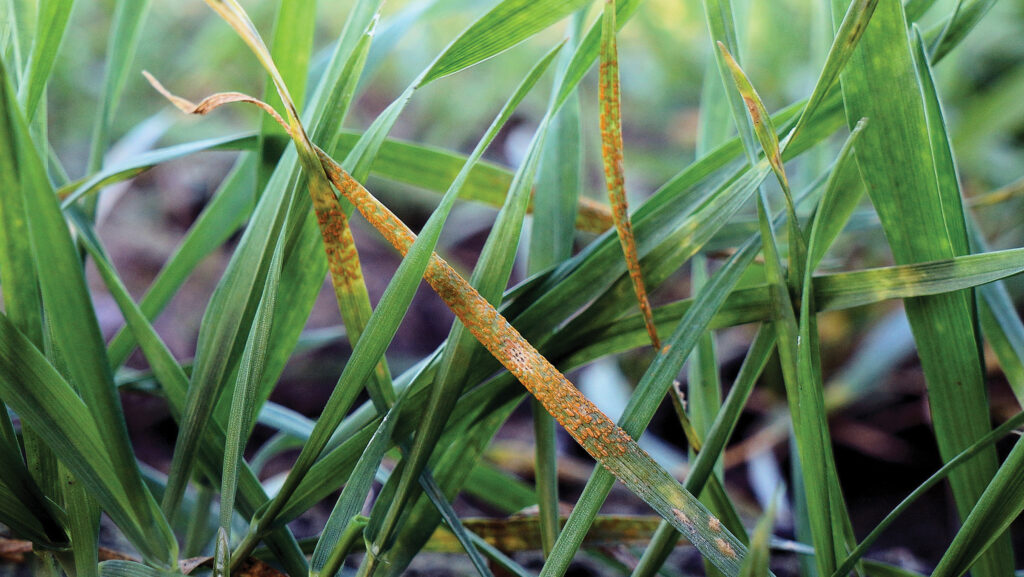Yellow rust alert as unusual observations seen in AHDB trials
 © Blackthorn Arable
© Blackthorn Arable Wheat growers are being advised to monitor their crops more closely for yellow rust and not rely on Recommended List disease ratings this spring.
The warning from the AHDB was due to unusual early observations of yellow rust on several winter wheat varieties in some Recommended List trials.
AHDB says recent RL trial inspections in the North of England have found signs of the foliar disease on several varieties classified as resistant at the young plant stage on the current list, including some varieties that are widely grown.
See also: Early-drilling could see rise in spring barley net blotch
There are also hints of unusual activity in other RL trial regions.
The AHDB adds that as the yellow rust pathogen population is highly diverse, it is not unusual to detect new strains.
“However, these early observations suggest there may be a significant new strain or strains in the UK pathogen population that we have not seen before.”
Help monitor rusts
To monitor UK rust populations effectively, UKCPVS needs samples from infected leaves taken from geographically diverse areas and various wheat varieties.
Anyone can submit a sample to UKCPVS via a simple Freepost service.
When high sample numbers are received, the UKCPVS team prioritises those taken from varieties that are expected to be resistant, according to RL data, but show unusual levels of disease in the field.
Interestingly, some varieties historically classified as susceptible at the young plant stage are at present relatively clean at the affected trial sites. This suggests a potential pathogen population shift that may have displaced some other yellow rust strains.
Mark Bollebakker, who manages the RL trials at AHDB, said: “The trials in question were at about growth stage 30 at the time of inspection, so adult plant resistance had not kicked in.
“When it does, from stem extension onwards, these varieties may outgrow initial infection. However, it is difficult to predict what will happen.
“We have sent samples to the UK cereal pathogen virulence survey (UKCPVS) for testing to give us a better understanding of what we are seeing.”
“With a very fluid situation, farmers and agronomists should inspect all varieties before final spray decisions and not rely on the RL ratings until we know more.
“Our trial inspectors are assessing the situation, and further updates will be issued as soon as possible.”

